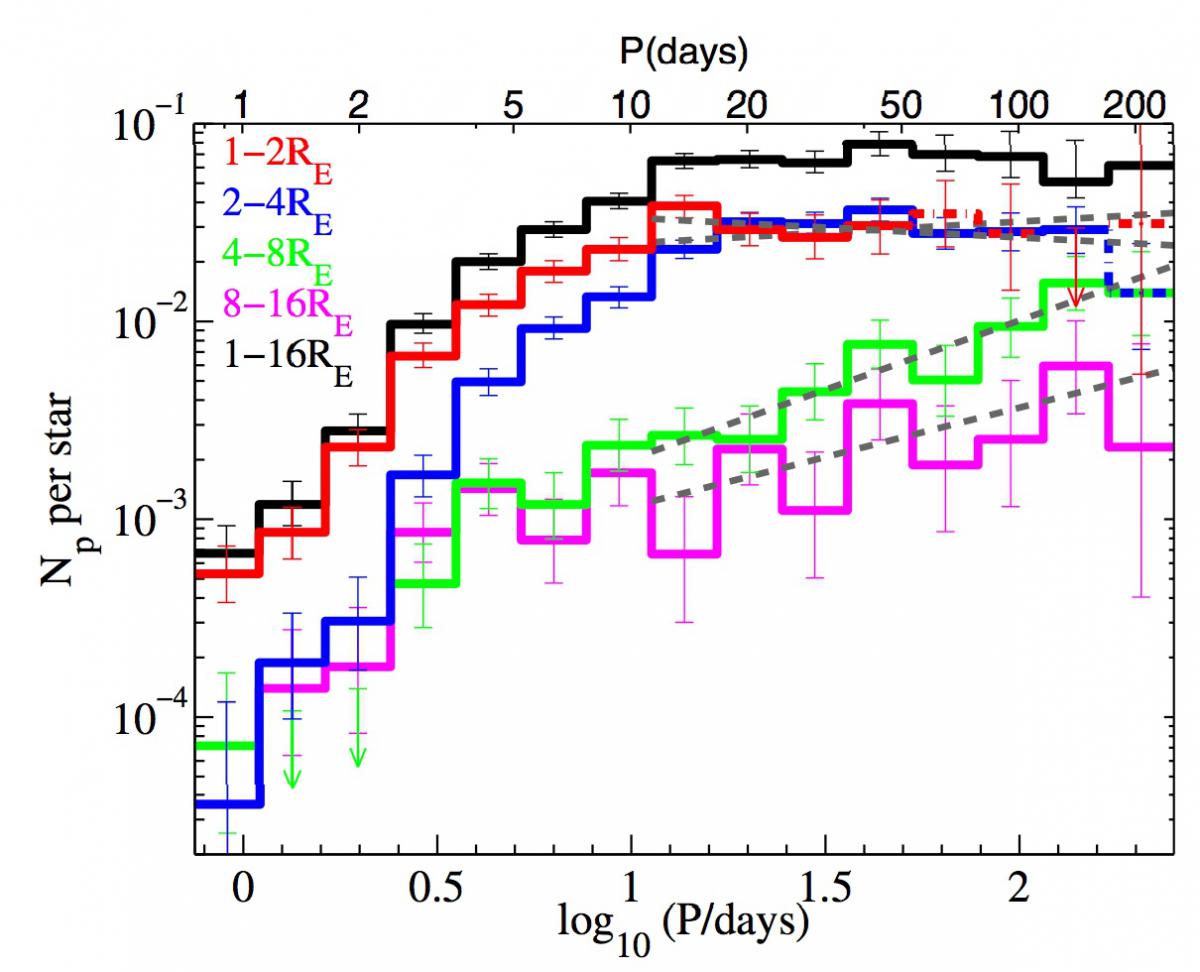Subo Dong (东苏勃) joined the faculty of KIAA in Fall 2013. One of his research interests is to robustly derive the distributions of extrasolar planets in order to find clues on how planet systems form and evolve. In a paper recently published in the Astrophysical Journal (http://arxiv.org/abs/1212.4853), he and Zhaohuan Zhu (Princeton University) determined the distributions of planets down to Earth size and in orbits closer than Venus.
Until the first extrasolar planet was discovered two decades ago, our understanding on how planets form had solely been based on studying the Solar System. Now more than one thousand planets outside the Solar System have been found. Their distributions show remarkable diversity and stark differences from the planets orbiting our own Sun.
The paper reported new patterns in planet distributions by analyzing data taken by NASA's Kepler satellite. The Kepler planets are discovered when they cross in front of their host stars and produce tiny dimming of the stars' brightness every orbital period. Planets that are bigger and at closer orbits to their hosts are easier to detect from Kepler. Dong and Zhu computed the incompleteness for the Kepler detections and thereby inferred the true distributions of
Kepler planets within periods less than 250 days (i.e. at around Venus' orbit).

Kepler planets exist in all sizes between Earth and a couple of times Jupiter with period less than Venus’. This is in sharp contrast with the Solar System -- within Mars’ orbit, all planets are no larger than the Earth. Dong and Zhu found that within 250-day orbits, small planets are more abundant than big planets around Sun-like stars. About 60% of stars have a planet with size between the Earth and Neptune (~4 times Earth radius), whereas planets with the sizes of Neptune and Jupiter only exist around ~7% and ~3% of stars, respectively. A similar pattern was found for more distant planets a few years ago by Dong and his collaborators. Using a technique called gravitational microlensing, they discovered that at a few times Earth’s orbit, planets with masses similar to or less than Neptune’s are much more abundant than bigger planets.
Dong and Zhu also found that the size distributions of planets evolve with orbital periods. Even though smaller planets are in general more common, there tends to be relatively more larger planets at longer period. In particular, the occurrence rate of “Neptune-size” planets (4-8 times Earth) grows by almost 10 times from orbits at 10 days to 250 days. Such a distribution is not anticipated by theories and may offer hints on how these planets form.
Dong plans to extend his research on planet distributions in the next few years. With collaborators in China and abroad, he is working on determining whether Kepler planet occurrence rate depends on the metal contents of host stars. They are measuring the chemical abundances of all one hundred fifty thousand Kepler target stars with China’s LAMOST telescope (郭守敬望远镜), one of the world’s most powerful wide-field spectroscopic instruments.
--------------------------------------------------------------------------------------------------------
Before joining KIAA, Subo Dong spent 4 years as a postdoctoral member at the Institute for Advanced Study, Princeton, and was inducted into the inaugural class of NASA Carl Sagan Fellows for exoplanet research. He received his Ph.D. in astronomy from the Ohio State University and B.Sc. in astronomy from Nanjing University.